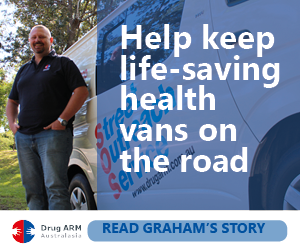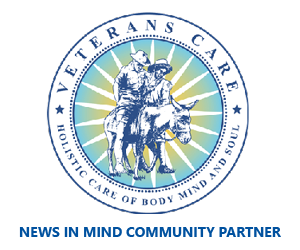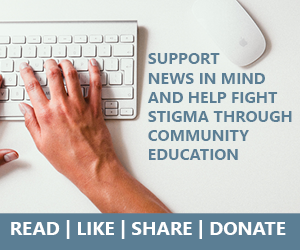The first anxiety attack happened when I was 12. My mother had sent a taxi to pick me up from school because I was ill. As the journey went on, I could feel myself becoming overwhelmed with a sense of panic, then dread.
The window next to me steamed up as my body heat peaked. I was struggling for air. My lips went blue from hyperventilation. By the time I got home my mother was convinced I was on my death bed, but the doctor said it was just a bug.
Those were the days when anxiety attacks were misunderstood. The next time was to be more serious and would have changed my future were it not for a stroke of luck. An A student right through school (except in maths — oh dear!), I was confident as I approached my final school exams. These were the days when your HSC/VCE result was based on final exams alone.
But once seated in that vast exam room, I started to suffocate and panic. This immediately turns off the logic centre of the brain, with the expected results. Because I feared they would return, the attacks then happened in each of my exams. I passed, but with an embarrassing ATAR. The good news for me was that The Age newspaper was made up of old journos in the days when being rough, rugged and ready was prized over academe — they gave me a cadetship.
Anxiety is an unseen evil and, according to many therapists and doctors, it is on the rise. It’s widely estimated that one in 10 people suffer from a version of anxiety disorder.
The condition was made popular by the those old Woody Allen-style skits of the 1970s — neurotic New Yorkers breathing into paper bags — but it’s no laughing matter.
Recently I helped a friend having an attack out of a theatre, her arms numb and tingling, bluish lips gulping for air. I ran her hands under hot water in the women’s toilets as she shook like a leaf.
Sufferer Katie Horneshaw wrote recently on news.com.au: “There is a photo of me from my 25th birthday party … I look so carefree in that shot, I could have fooled even myself. But I remember that day. I remember the jagged, half-finished thoughts colliding at speed inside my brain as my friends chatted and laughed. The forced chitchat, delivered with feigned nonchalance as within, the cacophony raged.
“I remember running to the bathroom to pray, plead with this thing inside me: ‘Please, just give me one day off. I’m begging you. It’s my birthday.’ And I remember that night, contorted and sobbing under the dining table. My boyfriend crouched beside me, fear etched into his brow as I wailed that I couldn’t take it any longer.”
Anxiety disorder can be triggered by outside sources but there is often a biological component, an inherited missing gene; a misfiring chemistry, according to neuroscientists. Brain scans can reveal damage to the prefrontal cortex (rational thinking) and memory centre of prolonged suffers, and circuits that regulate fear and emotion.
The physiology of attacks is frightening. The sympathetic nervous system switches on, which is related to fight or flight; the heart rate rises to intolerable levels; norephedrine, adrenalin and other excitatory chemicals start squirting into the body as if there were a lion chasing. The fear is often triggered at an unconscious level and therefore is hard to rationalise.
There is often hyperventilation, which constricts blood flow and can cause intense pain, and can look like heart attack.
When I was in the Alfred Hospital in Melbourne recently with someone who was having chest pains, I was told by the doctor on night duty in the cardiovascular unit that many of the cases brought in were people suffering anxiety. Their symptoms were similar to those of heart attack: irregular or speeding heartbeat, pain, chest or throat constriction, pain or tingling down one or two arms. “Thinking you are dying does not help the palpitations,” the doctor said.
There are many types of anxieties and reactions to them, including panic attacks; social phobia; specific phobias such as of spiders; obsessive compulsive disorder; hypochondria; and general anxiety disorder. I suffer from the latter and it is linked to my depression — a chronic, diffuse feeling of unease. Depending on the type of disorder, treatments include medication, cognitive therapy, hypnosis, holistic treatments and diet.
I found mindfulness-based therapy, meditation and yoga a lifesaver; breathing and focusing attention correctly during an attack can trick the sympathetic nervous system into switching off. I also eat healthy foods and medicate from time to time as needed.
But that path doesn’t help everyone, as a recent book, The Anxiety Book:A True Story of Phobias, Flashbacks and Freak-Outs and How I Overcame Them (Hachette Australia), by journalist Elisa Black attests. She writes: “My anxiety is a wild beast. It has destroyed relationships, clawed at my insides until I was sick, left me cowering under blankets, plagued me with panic attacks and tipped me into post-natal depression following the birth of my first son.”
As a young woman, Black had to move back home with her parents because of her illness; she couldn’t leave her room for three months. She tried everything. But she found no solace until tests for a genetic disorder led to the discovery it was a vitamin she was lacking.
She has a genetic mutation: “It has the rather apt acronym MTHFR. The result is that my body has trouble processing B-group vitamins.” MTHFR variants are common in the general population, according to the NSW Health Centre for Genetics Education, and can trigger a host of disorders including anxiety.
Black’s doctor, Adelaide GP Andrew Owen, prescribed the vitamin folinic acid (not to be confused with folic acid) and she claims it has cured her from years of suffering. A form of B12 (methyl-B12) is also thought to help. But though readily obtainable, both vitamins must be recommended by doctors in appropriate doses.
Determining the exact cause of anxiety is important for those looking for help. It is always advisable to seek the advice of a GP first. Help is there. The key to beating anxiety is not to be anxious about it.
This article first appeared on ‘The Australian’ on 4 March 2016.























